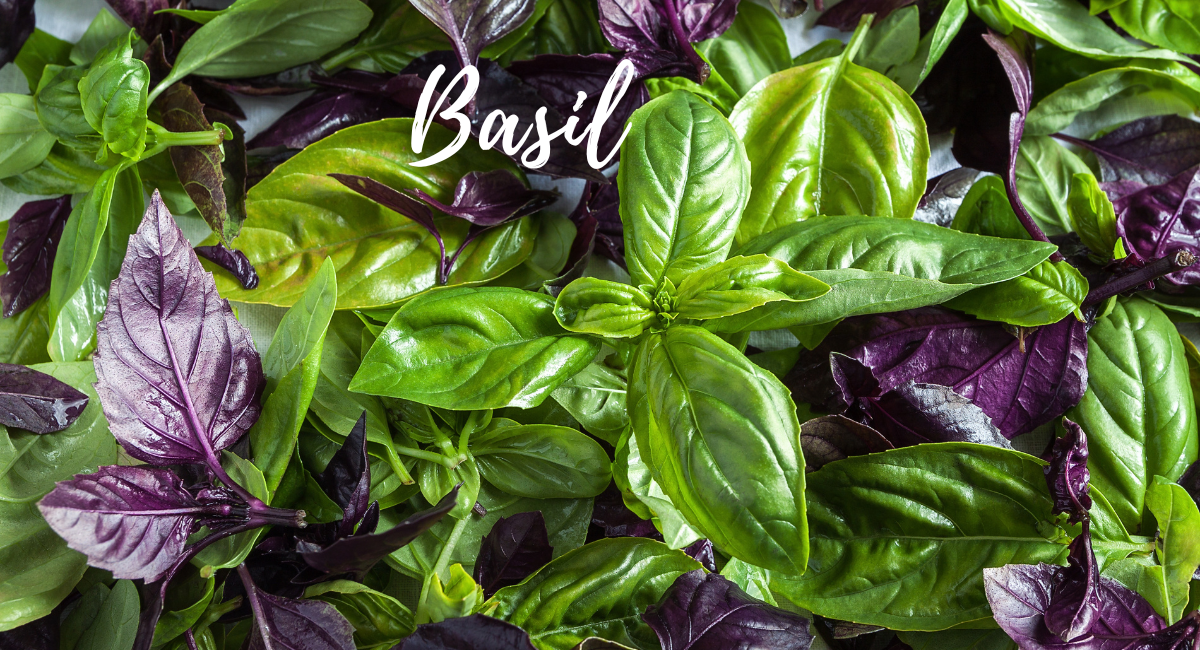The Marvel of Basil: A Comprehensive Exploration

Basil, often referred to as the “king of herbs,” is a culinary staple and aromatic delight cherished by cultures worldwide.
Its vibrant green leaves and distinct aroma have made it a centerpiece in an array of dishes, infusing them with a fragrant, sweet, and slightly peppery flavor.
In this article, we delve into the origin, varieties, health benefits, geographical cultivation, and versatile culinary applications of basil.
Origin and Historical Significance
Basil (Ocimum basilicum) has a rich history that traces back over 5,000 years, deeply intertwined with various ancient civilizations. Originating in India, basil quickly spread across continents due to trade and conquest, becoming an integral part of Mediterranean and Asian cuisines. In ancient Egypt, it was used in embalming practices, symbolizing love and protection. Meanwhile, in Greece, basil was associated with royalty, which is why it earned its title as the “king of herbs.”
Varieties of Basil
Basil boasts a plethora of varieties, each with distinct flavors and uses. Here are some of the most popular:
Genovese Basil
- Description: Perhaps the most famous variety, it is the backbone of Genovese pesto. Its large green leaves and slightly sweet flavor with a hint of anise are perfect in fresh dishes like Caprese salads.
Thai Basil
- Description: With a taste reminiscent of licorice and lemon notes, it is essential in many Thai, Vietnamese, and Laotian dishes. Its smaller, pointed leaves and purple stems add color and a spicy touch to dishes.
Holy Basil (Tulsi)
- Description: Known for its medicinal properties in Ayurveda, it has a spicy flavor and is used in both teas and traditional Indian dishes.
Purple Basil
- Description: Visually striking with its dark leaves, it has a milder flavor and is excellent for adding a contrast of color and mild flavor to salads and decorative dishes.
Lemon Basil
- Description: With its distinctive citrus aroma, it is ideal for infusions, teas, and adding a vibrant note to desserts and cocktails.
Nutritional Value
Basil is more than a flavor enhancer. It’s rich in vitamin K, essential for bone health and blood clotting. Additionally, it contains a good amount of antioxidants, including flavonoids and essential oils, which can promote cardiovascular health and combat inflammation. Each variety brings its own composition of essential oils, which can influence its specific health benefits.
Health Benefits of Basil
Basil is a powerhouse of health benefits:
- Rich in Antioxidants: Basil contains flavonoids and polyphenolic compounds that help combat oxidative stress.
- Anti-inflammatory Properties: Eugenol, a volatile oil in basil, has been shown to reduce inflammation and may aid in managing conditions like arthritis.
- Supports Digestive Health: Basil is known to promote digestion and alleviate gut issues.
- Boosts Immunity: The essential oils in basil, such as linalool and citronellol, strengthen the immune system.
- Stress Reduction: Certain compounds in basil help in managing stress and enhancing mood.
Regions of Cultivation
Basil thrives in warm, tropical climates but is adaptable enough to be grown in temperate regions, provided there’s enough sunlight and warmth. Key regions include:
- India: As the origin of basil, India cultivates a wide variety, primarily for medicinal and culinary purposes.
- Mediterranean: Italy and Greece are renowned for their sweet basil, integral to their culinary traditions.
- Southeast Asia: Countries like Thailand and Vietnam specialize in Thai basil, integral to their cuisine.
- United States: Basil is widely grown across the country, especially in California and the southern states, due to the favorable climate.
Culinary Uses and Preparation Tips
Basil’s versatility makes it a cherished ingredient across various culinary landscapes. Here are some notable applications:
- Pesto Sauce: Incorporates Genovese basil, pine nuts, Parmesan cheese, garlic, and olive oil. It’s served with pasta, as a sandwich spread, or drizzled over grilled vegetables.
- Caprese Salad: Combines fresh mozzarella, tomatoes, sweet basil, olive oil, and balsamic vinegar for a refreshing appetizer or side dish.
- Thai Green Curry: Features Thai basil, coconut milk, green curry paste, chicken, or tofu, serving as a flavorful main course with jasmine rice.
- Herbal Teas: Holy basil leaves are often combined with other herbs like mint or lemon for a calming beverage with health benefits.
- Lemon Basil Fish: Utilizes lemon basil, lime, garlic, and fish fillets for a zesty main course.
- Ice Cream and Desserts: Basil leaves can also be incorporated into ice creams and other desserts, offering an intriguing contrast of flavors.
To maximize its flavor, basil should be added at the end of cooking. It pairs perfectly with tomatoes, olive oil, garlic, cheeses, and lean meats.
Celebrated Basil-Based Dishes and Their Origins
1. Pesto alla Genovese
- Origin: Liguria, Italy
- Description: This iconic sauce combines fresh basil leaves with pine nuts, garlic, Parmesan cheese, and extra-virgin olive oil. It is typically used as a sauce for pasta, such as trofie or trenette, and embodies the essence of Ligurian cuisine.
2. Caprese Salad
- Origin: Campania, Italy
- Description: Named after the island of Capri, this simple yet flavorful salad consists of fresh mozzarella, ripe tomatoes, and basil leaves, drizzled with olive oil and balsamic vinegar. It highlights the fresh, sweet notes of basil.
3. Tom Yum Soup
- Origin: Thailand
- Description: A hot and sour Thai soup known for its aromatic broth made from lemongrass, kaffir lime leaves, and Thai basil. The basil adds a layer of depth and freshness to the dish.
4. Pho
- Origin: Vietnam
- Description: This traditional Vietnamese noodle soup is topped with Thai basil, which brings a peppery, licorice-like flavor to the rich, savory broth, complementing ingredients such as beef or chicken, lime, and bean sprouts.
5. Margarita Pizza
- Origin: Naples, Italy
- Description: A classic Neapolitan pizza featuring a simple topping of tomatoes, mozzarella cheese, and fresh basil leaves. The basil adds a fragrant aroma and a fresh taste to the pizza.
6. Green Curry
- Origin: Thailand
- Description: This spicy and aromatic curry features Thai basil prominently, which enhances the dish’s complex flavors. It is typically made with coconut milk, green curry paste, and a variety of meats or tofu.
These dishes reflect the global embrace of basil, which transcends its Italian roots to become a versatile herb in various international cuisines. Incorporating these recipes into the broader discussion of basil’s culinary uses can illustrate its widespread appeal and adaptability in enhancing an array of dishes worldwide.
Cultivation Tips for Home Gardeners
Basil is a gardener’s delight, easy to cultivate indoors or outdoors. Here are some tips:
- Planting: Use well-drained soil and ensure plenty of sunlight.
- Watering: Keep the soil consistently moist but not waterlogged.
- Pruning: Regularly pinch off flowers to encourage leaf growth.
- Harvesting: Pick leaves in the morning for peak flavor. Avoid harvesting more than one-third of the plant at a time to ensure continued growth.
Conclusion
Basil transcends its role as an aromatic herb to become an essential cultural and nutritional element. From its rich history to its diverse varieties and uses in modern cuisine, basil is a living testament to the multifaceted nature of the ingredients we choose to enrich our food.
By incorporating different types of basil into our cooking, we open up a world of culinary possibilities and take a step toward a healthier and more aromatic lifestyle. Its global appeal and adaptability make it an indispensable herb worth celebrating in kitchens and gardens alike.
Let basil inspire your next culinary adventure, as it continues to captivate with its unique charm and versatility.celebrating in kitchens and gardens alike. Let basil inspire your next culinary adventure, as it continues to captivate with its unique charm and versatility.
